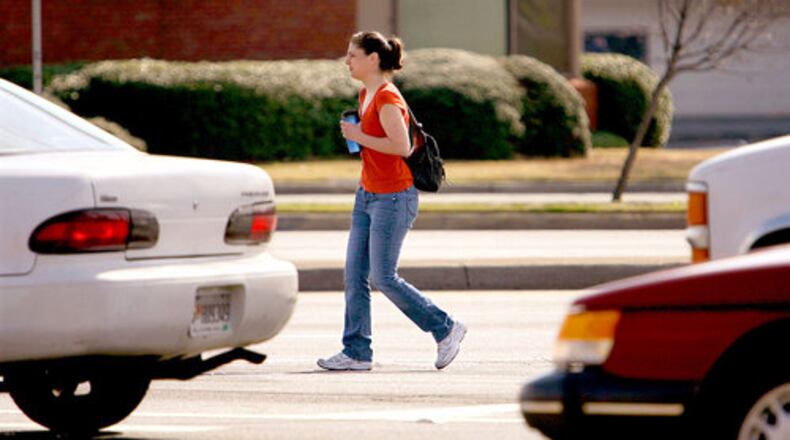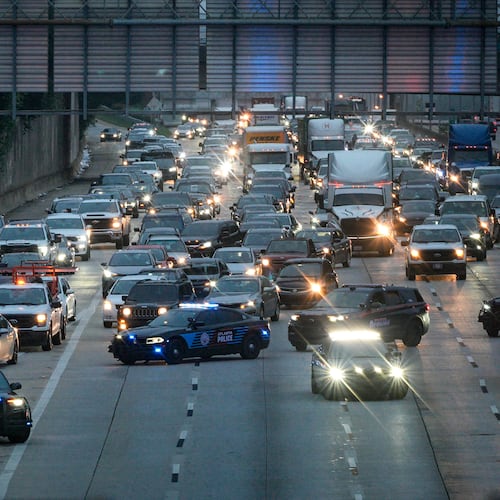The more time my wife, Momo, and I spend on foot in Chamblee while walking Stallz, our dog, the more in tune by how disconnected drivers and pedestrians are. Neither party can afford to take their attention off of their transportation task at hand, but the stakes are far higher for one more than the other.
This theme keeps arising: people encased in steel and glass that effortlessly moves and accelerates can easily become impervious to those around them. Automobiles are revolutionary inventions and are fun to drive. But this fact about awareness is concrete.
As bad as inattentive, reckless, selfish driving is for everyone in the motorized environment, the damage is far more consequential for those outside of the metal rockets.
Pedestrians do not always have the right of way, but drivers are urged to be cautious around them, regardless. That is the law.
Georgia law requires pedestrians to stay on sidewalks or, when there are none, to walk on the edge of the road. By the way, walking on the edges can be very dangerous in today’s driving environment.
The code also says that when pedestrians enter the roadway in an undesignated crossing point, such as a crosswalk, that they must yield to cars. And, of course, a walker, runner, someone in a wheelchair, or a cyclist walking a bike will be held at fault if they step in the path of a vehicle without giving that driver reasonable time to yield to them.
But, again, in all those instances, Georgia law requires drivers to exercise caution around pedestrians at all times, right or wrong. And the reasoning is simple: Autos almost always win confrontations with people.
There are murky scenarios where the estuary of vehicles and pedestrians creates confusion. Say someone is trying to cross a busy driveway; who yields to whom? Is that crossing point a road or a sidewalk?
I try to use this rule of thumb: If someone begins crossing a driveway before I get to that threshold in my car, they have the right of way. If I am on foot and there is a stream of cars turning out of a business, trying to enter the part in the oncoming traffic flow, I wait for them. I do not force the issue.
Give and take is a requirement for both parties, but drivers have the heavier burden of responsibility because of the carnage they can cause.
Just this week alone, I have had hasty motorists zoom past me in a driveway or crosswalk in which I am clearly standing. There wasn’t even a hesitation on their part. I am not even sure they saw me (or Stallz).
If I, the walker, had been texting, changing a song, or cuing up the WSB Radio App, I might not have noticed the brisk-moving four-wheeler. The damage to their fender or hood would have paled in comparison to broken bones or other injuries that Stallz or I could have received.
Give and take.
The outward pressure on everyone to keep airtight schedules and keep up with the stream pushing them to the next event helps cause the danger in these confluent transportation environments. Anxiety-induced tunnel vision, coupled with the aloofness brought by glass and steel barriers, and stirred with mobile distractions create a recipe for potential disaster when vehicles and pedestrians meet.
Drivers’ past tastes for sedans and coupes have morphed to trucks and SUVs, meaning the bumpers are higher and the blind spots are bigger. That is bad news for those on foot, in wheelchairs, or on bikes and scooters. Late-model autos accelerate faster than ever, especially if they are electric-powered. That is another strike against pedestrian safety.
Everyone in a commuting ecosystem has some responsibility for the safety of themselves and everyone else. But the biggest onus, though, is upon automobile drivers. When someone has wheel privilege, they should behave as such. Pay it forward. Driving is a privilege.
Doug Turnbull, the PM drive Skycopter anchor for Triple Team Traffic on 95.5 WSB, is the Gridlock Guy. Download the Triple Team Traffic Alerts App to hear reports from the WSB Traffic Team automatically when you drive near trouble spots. Contact him at Doug.Turnbull@cmg.com.
About the Author
The Latest
Featured


